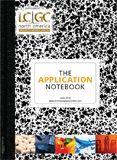Characterization of Metabolites in Neat Rice Leaf Extracts Using High Resolution Time of Flight Mass Spectrometry Coupled to Gas Chromatography
The Application Notebook
Plant materials contain a wealth of information on plant viability and health. The analysis of the metabolite contents of the leaves of various plants has been informative in the comparison of organisms.
Plant materials contain a wealth of information on plant viability and health. The analysis of the metabolite contents of the leaves of various plants has been informative in the comparison of organisms. Of increasing importance is the understanding and comparison of different strains within a given plant for the evaluation of growth traits, hardiness and resistance to disease, environmental conditions such as drought, and content of nutrients or pharmacologically active ingredients. One method by which this information can be gleaned is by gas chromatography with mass spectrometric detection. Here, the analysis of organic extracts from rice leafs are analyzed using high resolution time of flight mass spectrometry coupled to gas chromatography. It represents a simple preparation without derivatization but with the ability to detect a range of analytes and to differentiate the relative levels between strains of a given organism such as rice.
Experimental
Rice leaf extracts were prepared by sonicating 100 mg of lyophilized leaf powder per 1 mL of ethyl acetate. A 1-µL portion of the extract was injected into the GC–MS using the conditions described below.
Sample Introduction
GC: Agilent 7890
Carrier Gas: He @ 1.5 mL/min
Column: Rxi-5Sil MS; 30 m × 0.25 mm × 0.25 µm
GC Oven: 50 °C (2 min), 20 °C/min to 500 °C (10 min hold)
MS Transfer Line: 200 °C
MS: LECO Pegasus® GC-HRT
Saved mass range: 50–525 m/z
Acquisition rate: 12.5 spectra/s
Source temperature: 300 °C
Results and Discussion
This direct analysis of a botanical extract provided detection of more than 460 analytes in each of the extracts from six different rice strains. Many differences in relative intensity of these were observed among the strains. Among them was an analyte with a base peak fragment ion of 165.09095 (C10H13O2) and a higher mass ion at 430.3800 (C29H50O2). These match the theoretical m/z values for the formulae to within 0.05 and 0.5 mDa each (less than 370 ppb). Furthermore they represent matches to a fragment ion and the molecular ion, respectively, assignable to α–tocopherol which is the library match. As is shown in Figure 1 with the high mass accuracy extracted ion traces, α–tocopherol, which is a potent antioxidant, changes substantially among the various strains. Other analytes including phenolic and carboxylic acid derivatives were observed as well.

Figure 1: Selected ion traces (m/z 165.091±0.005) for Vitamin E (α-tocopherol) in Leaf Extracts from Rice Strain Variants.
High resolution, accurate mass analysis provides a tool for selective analysis of plant extracts for the characterization of metabolites with many degrees of confidence. Identification and selective comparison are each enhanced with these capabilities.
For the complete version of this application note, please visit www.leco.com
LECO Corporation
3000 Lakeview Avenue, St. Joseph, MI 49085
Tel. (269) 985-5496, fax (269) 982-8977
Website: www.leco.com


.png&w=3840&q=75)

.png&w=3840&q=75)



.png&w=3840&q=75)



.png&w=3840&q=75)














